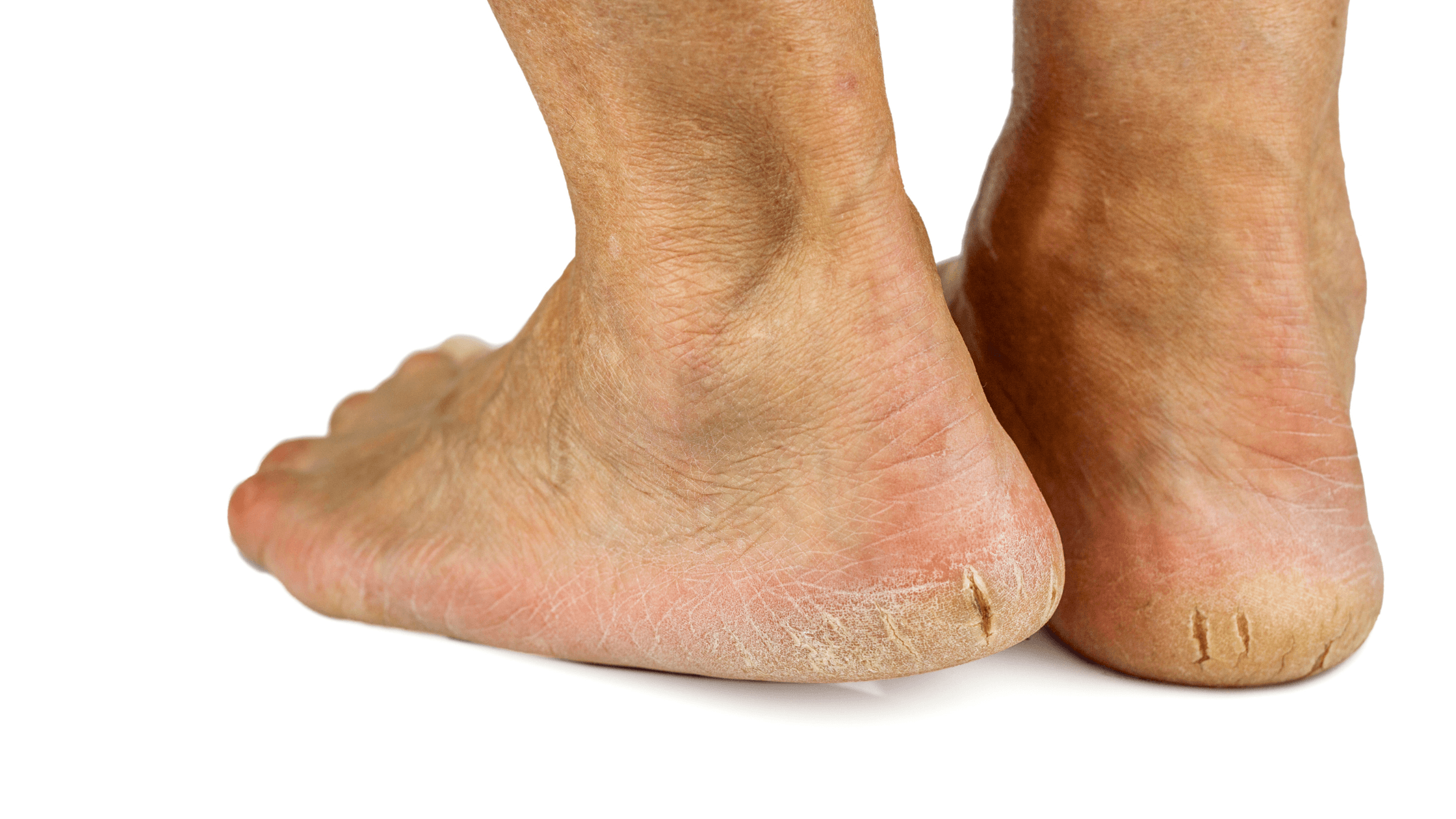Heel Cracks
As the warmer months approach, many of us are eager to slip out of our winter boots and into sandals and bare feet. However, this seasonal transition often brings an unwelcome surprise: painful heel cracks. At our clinic, we see a significant increase in heel fissure cases during this time of year, but the good news is that they're entirely preventable and treatable with the right approach.
What Are Heel Cracks and Why Do They Happen?
Heel cracks, medically known as heel fissures, are splits or cracks that develop in the thick skin of your heels. The heel area contains the thickest skin on your entire body, designed to withstand the constant pressure and impact of walking and standing.
The Winter-to-Summer Transition Problem
During winter months, your feet spend most of their time enclosed in shoes and socks, creating a relatively humid environment. This constant moisture exposure causes the skin on your heels to thicken significantly as a protective response. However, when you suddenly transition to open footwear or go barefoot in warmer, drier conditions, this thick skin loses moisture rapidly, becomes dehydrated, and loses its natural elasticity—leading to painful splits and cracks.
Understanding the Severity Spectrum
Heel cracks exist on a spectrum of severity:
Superficial Cracks: These are shallow fissures that affect only the outer layers of skin. While they may look unsightly, they typically cause minimal discomfort and pose little health risk.
Deep Fissures: These extend deeper into the skin layers and can be quite painful, especially when walking or standing. They may bleed and create an entry point for bacteria, potentially leading to infections that require medical attention.
Infected Cracks: When bacteria enter through deep fissures, they can cause serious infections that may require antibiotic treatment and professional medical care.

Heel Crack Prevention Strategies
- Maintain consistent moisture levels, Don't wait for cracks to appear. Use a quality foot moisturiser regularly throughout the year, paying special attention to heel areas.
- Gentle cleansing, Wash your feet daily with lukewarm water and mild soap, avoiding harsh scrubbing that can damage the skin barrier.
- Proper drying, Thoroughly dry your feet, especially between toes, but don't over-dry the heel area.
- Regular inspection, Check your feet daily for early signs of dryness, thickening, or small cracks that can be addressed before they worsen.
- Stay hydrated, Adequate water intake supports overall skin health, including your feet.
- Wear appropriate footwear, Choose shoes that fit properly and provide adequate support without being too tight or loose.
- Protect your feet, Avoid walking barefoot on rough surfaces that can damage or thicken heel skin.
Professional Treatment
Contact a podiatrist if you experience:
- Deep cracks that bleed or cause significant pain
- Signs of infection (redness, warmth, swelling, or discharge)
- Cracks that don't improve with consistent self-care
- Underlying health conditions like diabetes that can complicate foot problems
The Importance of Specialised Heel Balms
Not all moisturisers are created equal when it comes to treating heel cracks. Specialised heel balms contain unique ingredients specifically formulated to:
- Penetrate thick skin, Unlike regular hand lotions, heel balms are designed to break through the barrier of thickened heel skin
- Provide deep hydration, They deliver moisture to deeper skin layers where it's most needed
- Maintain flexibility, They help keep thick skin supple and less prone to cracking
- Offer lasting protection, Many formulations provide longer-lasting moisture retention
Application Tips for Maximum Effectiveness
The key to successful heel balm treatment lies in consistent, proper application:
- Timing matters, Apply balm to clean, slightly damp feet for better absorption
- Focus on problem areas, Concentrate application on the thickened skin around heels
- Frequency, For severe cases, apply twice daily; for maintenance, once daily is typically sufficient
- Be patient: Consistent use over several weeks is usually required to see significant improvement
- Post-debridement care: If you've had professional skin removal, heel balm application becomes even more critical for healing and prevention
Heel cracks don't have to sideline your summer activities. With proper understanding, prevention strategies, and appropriate treatment when needed, you can maintain healthy, comfortable feet throughout the seasonal transition and beyond.
The investment in quality heel care products and consistent daily routines pays dividends in comfort, appearance, and overall foot health. Remember, the most effective treatment is often prevention, and the best time to start caring for your feet is before problems develop.
Stay active, stay comfortable, and enjoy everything this summer has to offer with confident, healthy feet.
Suffering from Heel Cracks?
Are you are feeling like you have tried everything but are still suffering from heel cracks?
Do you feel like you have seen every health practitioner you can about your heel cracks with no results?
We have a track record of diagnosing and successfully treating cases that have previously proven difficult to resolve and we’d love to help you get the problem sorted.
